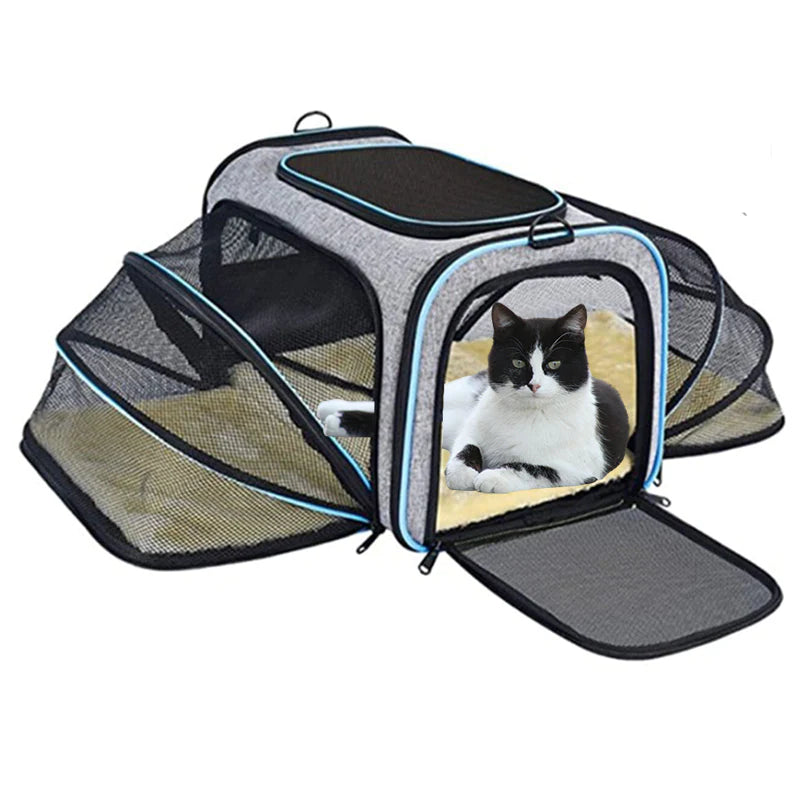
How to choose the right pet carrier for your pet
The prospect of traveling with a pet can seem overwhelming, but with the right pet carrier, it doesn't have to be. A pet carrier serves not just as a mode of transportation, but a portable safe haven for your pet. Choosing the correct carrier for your furry friend is essential to their comfort, security, and well-being during transit.
Understand Your Pet's Needs
Before choosing a carrier, it’s important to understand your pet's specific needs. Consider factors like your pet's size, temperament, and any special health conditions. For example, a larger pet will need a spacious carrier, while a nervous pet might appreciate a carrier with privacy features.
Size Matters
One of the most crucial aspects of a pet carrier is its size. Your pet should have enough room to turn around, stand, sit, and lie down comfortably. A carrier that is too small can cause stress and discomfort, while one that is too big can be difficult to transport.
To determine the right size, measure your pet's height from feet to shoulder, and length from nose to base of tail, and add a few inches to both measurements. This should give you a fair idea of the necessary dimensions.
Hard or Soft Carrier?
The choice between a hard and soft carrier depends on your pet's size, the purpose of the carrier, and personal preferences.
Hard carriers are sturdy, often made of high-quality plastic, and provide a solid structure that can be more secure during car trips or airline travel. They are generally easier to clean and can handle a bit of gnawing or scratching.
Soft carriers, made of fabric, are lighter and more portable. They can be more comfortable for pets and are often allowed as carry-on luggage in airplanes. However, they may not be suitable for larger, more active pets, or those prone to anxiety or escape attempts.
Ventilation
Adequate ventilation is another critical factor. The carrier should have enough mesh panels or ventilation holes to ensure a steady flow of fresh air. The carrier's door should also be secure yet easy to open and close for quick access in case of emergencies.
Visibility
Some pets feel more comfortable when they can see their surroundings, while others may prefer a bit more privacy. Clear or mesh panels allow your pet to observe their environment, which can be reassuring. However, if your pet is prone to anxiety, a carrier with privacy covers that can be rolled down may be better.
Portability and Storage
A carrier should be easy to carry, with sturdy handles or straps. Consider a carrier with wheels if your pet is larger or you'll be traveling long distances. The carrier should also be easy to assemble and disassemble for storage purposes.
Carrier Door Location
The position of the carrier's door can affect how easy it is to get your pet in and out. Some carriers only have a front door, while others have multiple doors or a top-loading feature. Multi-door carriers can be useful for pets that are anxious or resistant to entering the carrier.
Check Airline Regulations
If you plan to travel by air, it’s essential to check the specific airline's pet carrier regulations. These regulations usually include size restrictions for carry-on carriers, so a collapsible or adjustable carrier can be a good option.
Durability
Finally, consider the carrier's durability. It should withstand your pet's weight and resist their scratching or chewing. The zippers and locks should also be robust and secure to prevent any accidental escapes.
Test Drive
Once you've chosen a potential carrier, it's worth taking it for a "test drive." Let your pet explore the carrier in a low-stress environment, perhaps with some favorite toys or treats inside. This can help your pet adjust to the new carrier and reduce anxiety when it's time for the actual trip.
Choosing a pet carrier isn't just about picking the first one you see on the shelf. It requires careful thought and consideration. Your pet's comfort, safety, and happiness should always be paramount when choosing a carrier.
Remember, the right carrier can make a world of difference in your pet's travel experience. So, take your time, evaluate your options, and you'll be well on your way to enjoyable travels with your four-legged friend.
- Choosing a selection results in a full page refresh.












